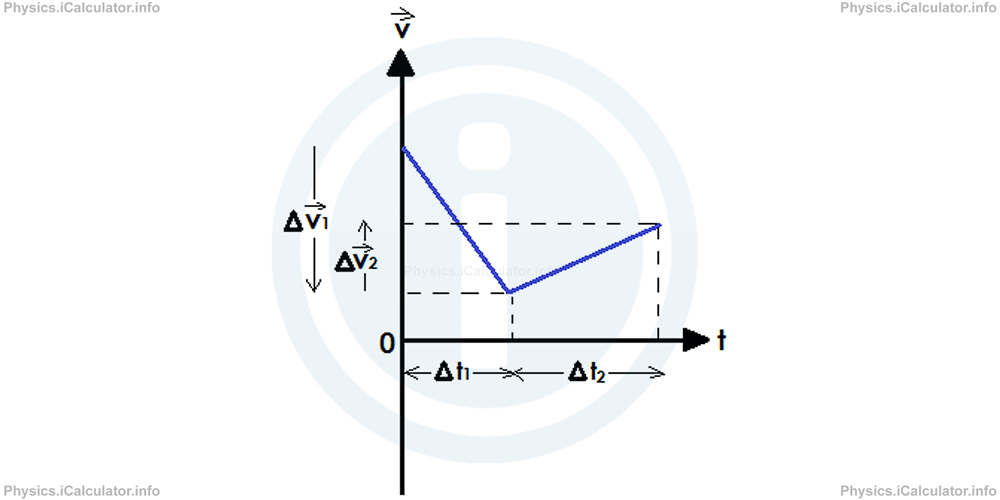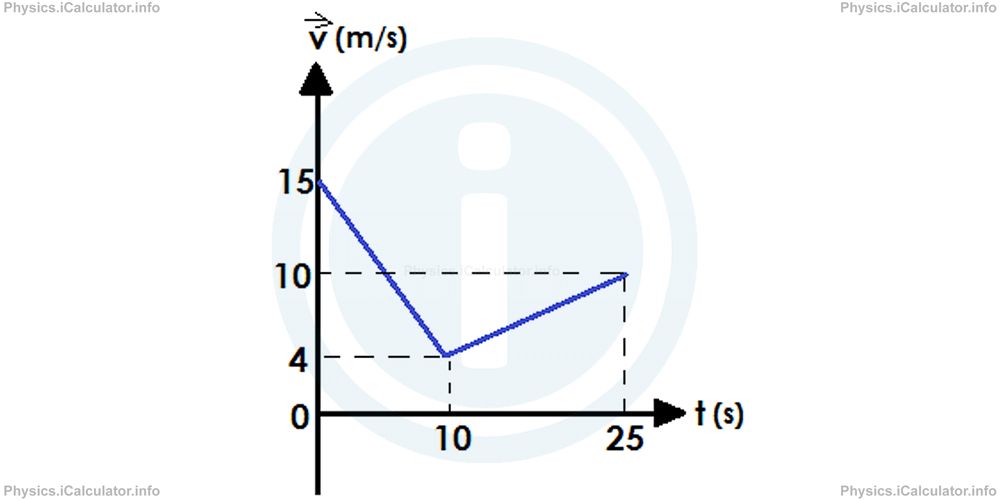Menu
Physics Lesson 3.10.3 - Velocity verse Time Graph in Uniformly Accelerated (Decelerated) Motion
Please provide a rating, it takes seconds and helps us to keep this resource free for all to use
Welcome to our Physics lesson on Velocity verse Time Graph in Uniformly Accelerated (Decelerated) Motion, this is the third lesson of our suite of physics lessons covering the topic of Velocity v's Time and Speed v's Time Graph, you can find links to the other lessons within this tutorial and access additional physics learning resources below this lesson.
Velocity verse Time Graph in Uniformly Accelerated (Decelerated) Motion
In the previous tutorials, we stated that in uniformly accelerated (decelerated) motion, i.e. in the motion with constant acceleration, the velocity increases or decreases at the same rate. This means the Velocity vs Time graph of this kind of motion will be a sloped straight line as shown below

In the first part of the graph, the acceleration is negative as the velocity decreases, while in the second part, the acceleration is positive as the velocity increases.
Also, here again we can find the displacement by calculating the area under the graph as stated in the previous paragraph. Thus, the area bordered by the graph and the horizontal axis gives the numerical value of the displacement. Let's explain this point by illustrating it with numbers.
Example 1
The velocity vs time graph below represents the motion of an object in a linear direction.

Calculate:
- The acceleration during the first 10 seconds
- The acceleration during the next 15 seconds
- The total displacement of the object
Solution 1
From the graph, we can extract the following values for the first interval. We have
v⃗1 = 4 m/s
Δt1 = 10 s
Thus, we obtain
= 4 m/s - 15 m/s/10 s
= -11 m/s/10 s
= -1.1 m/s2
The same procedure is used to calculate the acceleration during the second interval Δt2. We have
v⃗ = 10 m/s
Δt2 = 25 s - 10 s = 15 s
Therefore,
= 10 m/s - 4 m/s/15 s
= 6 m/s/15 s
= 0.4 m/s2
We have to calculate the area under the graph to calculate the displacement. Both parts of the graph represent trapeziums, so their area is calculated by the equation
In the first interval, we have:
Shorter base = v⃗1 = 4m/s
Height = ∆t1 = 10 s
Area 1 = Displacement 1 = ∆x⃗1
Hence,
= (15 m/s + 4 m/s) × 10s/2
= 95 m
The same procedure is used in the second interval as well. We have:
Shorter base = v⃗1 = 4 m/s
Height = ∆t2 = 15 s
Area 2 = Displacement 2 = ∆x⃗2
Thus,
= (10 m/s + 4 m/s) × 15s/2
= 105 m
Therefore, the total displacement is
= 95 m + 105 m
= 200 m
In the above problem, it was confirmed the veracity of the second formula of the uniformly accelerated (decelerated) motion
You have reach the end of Physics lesson 3.10.3 Velocity verse Time Graph in Uniformly Accelerated (Decelerated) Motion. There are 4 lessons in this physics tutorial covering Velocity v's Time and Speed v's Time Graph, you can access all the lessons from this tutorial below.
More Velocity v's Time and Speed v's Time Graph Lessons and Learning Resources
Whats next?
Enjoy the "Velocity verse Time Graph in Uniformly Accelerated (Decelerated) Motion" physics lesson? People who liked the "Velocity v's Time and Speed v's Time Graph lesson found the following resources useful:
- Uniform Velocity Time Feedback. Helps other - Leave a rating for this uniform velocity time (see below)
- Kinematics Physics tutorial: Velocity v's Time and Speed v's Time Graph. Read the Velocity v's Time and Speed v's Time Graph physics tutorial and build your physics knowledge of Kinematics
- Kinematics Revision Notes: Velocity v's Time and Speed v's Time Graph. Print the notes so you can revise the key points covered in the physics tutorial for Velocity v's Time and Speed v's Time Graph
- Kinematics Practice Questions: Velocity v's Time and Speed v's Time Graph. Test and improve your knowledge of Velocity v's Time and Speed v's Time Graph with example questins and answers
- Check your calculations for Kinematics questions with our excellent Kinematics calculators which contain full equations and calculations clearly displayed line by line. See the Kinematics Calculators by iCalculator™ below.
- Continuing learning kinematics - read our next physics tutorial: Acceleration v's Time Graph
Help others Learning Physics just like you
Please provide a rating, it takes seconds and helps us to keep this resource free for all to use
We hope you found this Physics lesson "Velocity v's Time and Speed v's Time Graph" useful. If you did it would be great if you could spare the time to rate this physics lesson (simply click on the number of stars that match your assessment of this physics learning aide) and/or share on social media, this helps us identify popular tutorials and calculators and expand our free learning resources to support our users around the world have free access to expand their knowledge of physics and other disciplines.